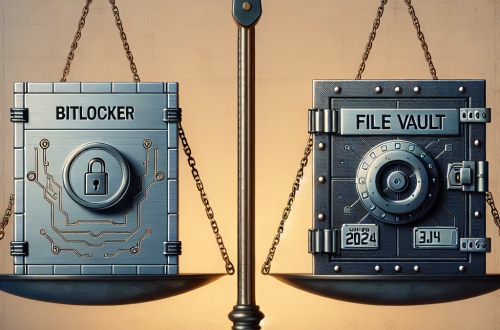BitLocker on Legacy BIOS Systems
Summary:
BitLocker on legacy BIOS systems refers to the implementation of Microsoft’s full-disk encryption technology on older computers without Unified Extensible Firmware Interface (UEFI) support. Unlike modern systems with UEFI and Trusted Platform Module (TPM) chips, legacy BIOS-based machines rely on a pre-boot authentication key (password or USB-based key) to decrypt and boot the operating system. Common triggers for issues include hardware changes, BIOS misconfigurations, or corrupted startup files. BitLocker in this environment operates without TPM integration, reducing some security features but still providing essential data encryption.
What This Means for You:
- Immediate Impact: Users may encounter boot failures or BitLocker recovery prompts if the startup key is lost or if BIOS settings are altered.
- Data Accessibility & Security: Ensure secure storage of the BitLocker recovery key, as legacy BIOS systems lack TPM-backed secure boot validation.
- System Functionality & Recovery: Unexpected BIOS resets or hardware modifications may trigger recovery mode—always back up the recovery key before changes.
- Future Outlook & Prevention Warning: Transitioning to UEFI with TPM 2.0 provides stronger security; legacy BIOS systems should be upgraded where possible.
Explained: BitLocker on Legacy BIOS Systems
Solution 1: Resolving Boot Issues Without TPM
On legacy BIOS systems, BitLocker depends on pre-boot authentication (password or USB key) for decryption. If boot failures occur, verify the correct boot order in BIOS and ensure the USB key (if used) is connected. If a password was set, check for keyboard layout mismatches during input. Modify the BitLocker policy via the Local Group Policy Editor (gpedit.msc) to enforce compatibility:
Computer Configuration > Administrative Templates > Windows Components > BitLocker Drive Encryption > Operating System Drives > Require additional authentication at startup > Enabled
Solution 2: Using the Recovery Key
If BitLocker enters recovery mode, the 48-digit recovery key is required. Retrieve it from Microsoft account, Active Directory, or a previously saved file. At the recovery prompt, enter the key manually or via USB. To re-enable BitLocker afterward, use:
manage-bde -protectors -add C: -RecoveryPassword [YOUR_KEY]
Replace [YOUR_KEY] with the stored recovery key and reboot the system.
Solution 3: Advanced Troubleshooting
Corrupted BIOS settings or hardware changes (e.g., disk replacements) can trigger recovery. Reset BIOS to default settings and disable unnecessary boot options. For suspected disk corruption, run chkdsk /f C: from Windows Recovery Environment (WinRE). If BitLocker metadata is damaged, use:
repair-bde C: D: -rp [YOUR_KEY] -force
to decrypt and repair the drive (where D: is a backup destination).
Solution 4: Data Recovery Options
If the OS is unbootable but the drive is intact, attach it as an external disk to another Windows system and unlock it via BitLocker GUI or PowerShell (Unlock-BitLocker -MountPoint "X:" -RecoveryPassword [YOUR_KEY]). For total failures, third-party tools like ElcomSoft’s Forensic Disk Decryptor may extract data if the recovery key is known.
People Also Ask About:
- Can BitLocker work without TPM on legacy BIOS? Yes, via password or USB key authentication.
- Why does BitLocker keep asking for a recovery key on my old PC? BIOS resets, hardware changes, or failed boot validations trigger recovery mode.
- How do I disable BitLocker on a legacy BIOS system permanently? Decrypt the drive via
manage-bde -off C:in an elevated command prompt. - Is BitLocker on legacy BIOS secure? Less secure than TPM-backed UEFI systems but still provides encryption if keys are protected.
Other Resources:
- Microsoft Docs: BitLocker Overview
- NIST SP 800-111: Guide to Storage Encryption
Suggested Protections:
- Store recovery keys offline in multiple secure locations (e.g., printed copy, encrypted USB).
- Avoid modifying BIOS settings unnecessarily; document changes.
- Upgrade to UEFI/TPM-enabled hardware for enhanced security.
- Regularly test recovery key access to ensure usability.
- Enable BitLocker system logs (
manage-bde -status) for troubleshooting.
Expert Opinion:
Legacy BIOS systems running BitLocker represent a trade-off between accessibility and security. While they protect against physical theft, the absence of TPM increases reliance on user-managed keys—a single point of failure. Enterprises should prioritize migrating to UEFI systems, but for legacy environments, rigorous key management is non-negotiable.
Related Key Terms:
- BitLocker recovery key
- Legacy BIOS encryption
- Pre-boot authentication
- TPM-less BitLocker
- Windows disk encryption
- BIOS boot issues
- BitLocker PowerShell commands
*Featured image sourced by DallE-3





